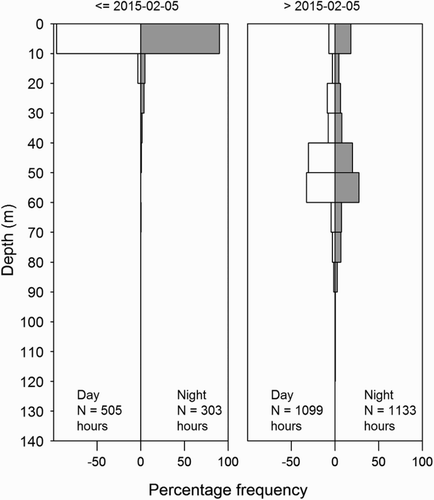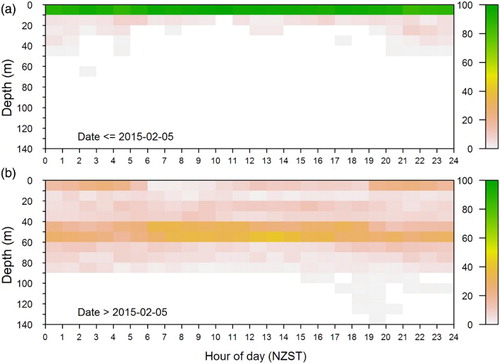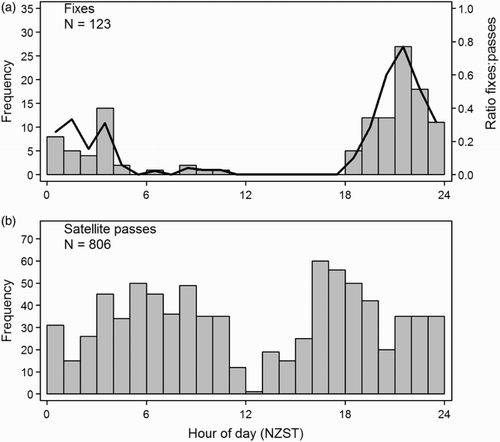Figures & data
Figure 1. Distribution of reported commercial catches of hammerhead sharks (Sphyrna zygaena) by fishing method, 2005–2014. A few catches were reported from outside the map boundaries. Bottom trawl includes Danish seine. Some positions appear erroneous, for example bottom longline and set net sets in depths greater than 1000 m. Also shown (bottom right panel) are the numbers of hammerhead sharks caught in research trawl stations, 1961–2014. Grey dots are stations that caught no sharks, and white circles show positive catches. Circle area is proportional to the number caught (range 1–15 sharks).
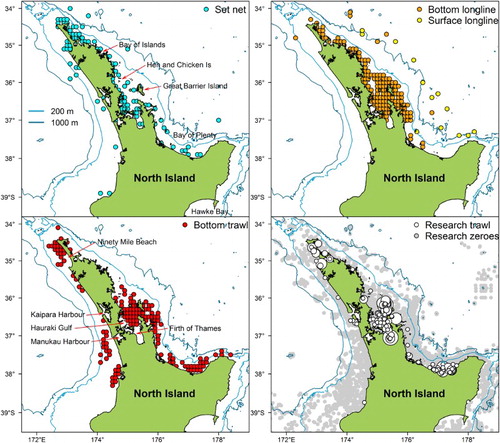
Figure 2. SPOT-tagged hammerhead shark (Sphyrna zygaena, Shark 4, 1.39 m female) about to be released. Note the soft, braided, double-loop, rope bridle used to support and restrain the head while the vessel motors slowly forward.
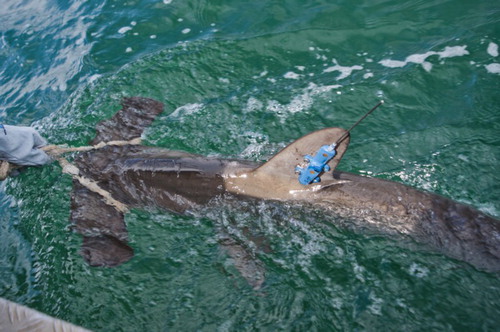
Table 1. Tagging details and track durations for five hammerhead sharks (Sphyrna zygaena).
Figure 3. Quarterly length-frequency distributions of hammerhead sharks (Sphyrna zygaena) caught in research trawl surveys. Note that the vertical axes differ in scale.

Figure 4. Tag tracks for hammerhead sharks (Sphyrna zygaena). A. 6-day SPOT track for Shark 2. B. 55-day SPOT track for Shark 4. C. 250-day PAT track for Shark 5, including 50%, 75% and 95% probability surfaces.
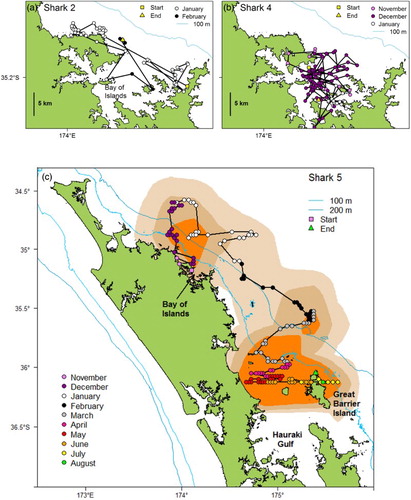
Figure 5. Depth and temperature recorded by a PAT tag for a hammerhead shark (Sphyrna zygaena, Shark 5) during a 250-day deployment. A. Time series depth (black) and temperature (red) data. B. Daily percentage of time spent in 10 m depth classes. The blue line shows the seabed depth at the track locations in C. C. Daily percentage of time spent in 1 °C temperature classes. Vertical dashed lines separate two time phases with different behaviour.
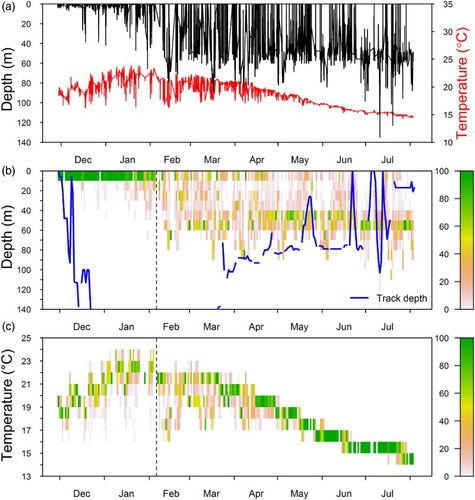
Figure 6. Differences in depth distribution of a PAT-tagged hammerhead shark (Sphyrna zygaena, Shark 5) by day (white bars) and night (grey bars) during the two time phases identified in .
